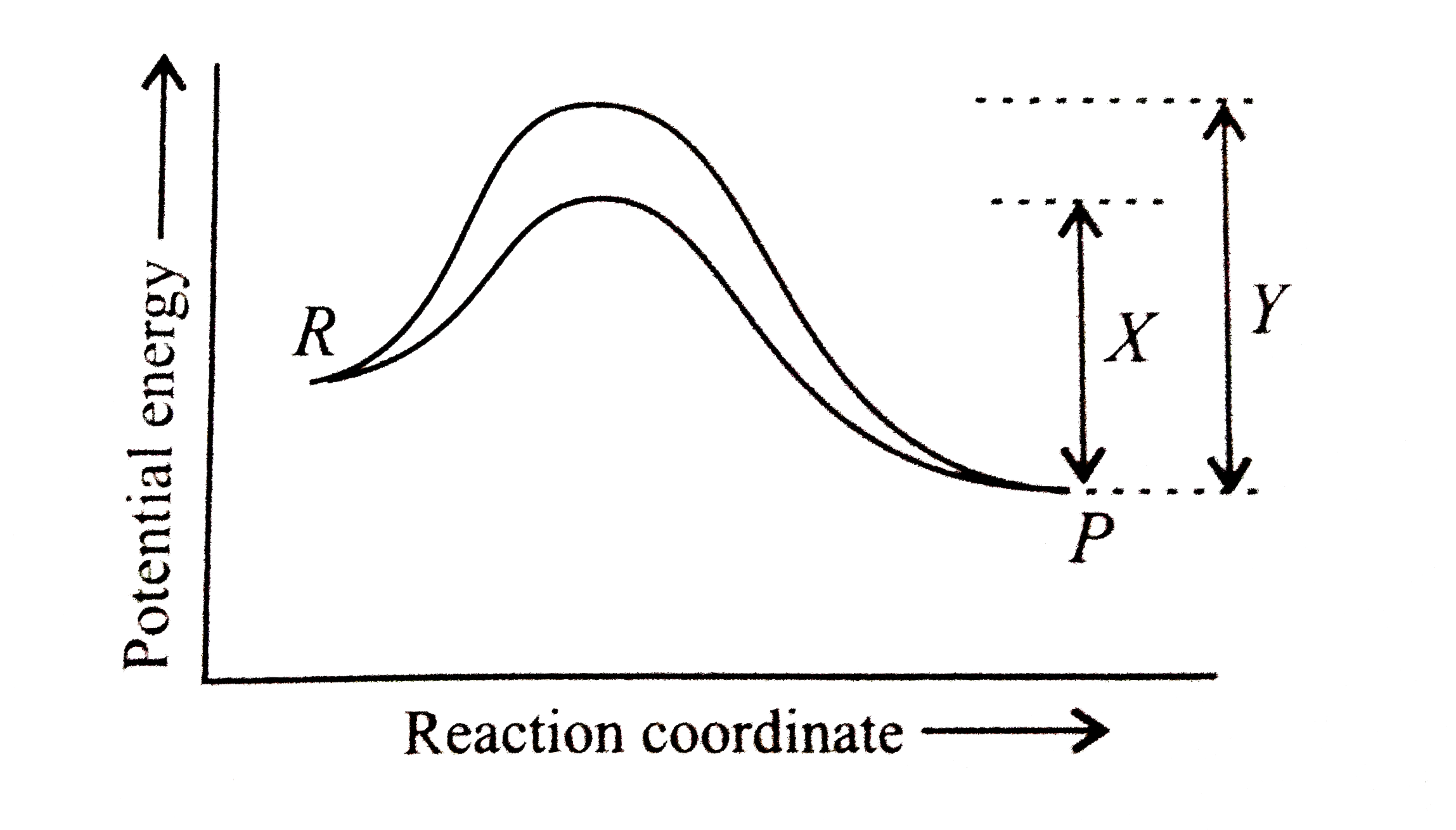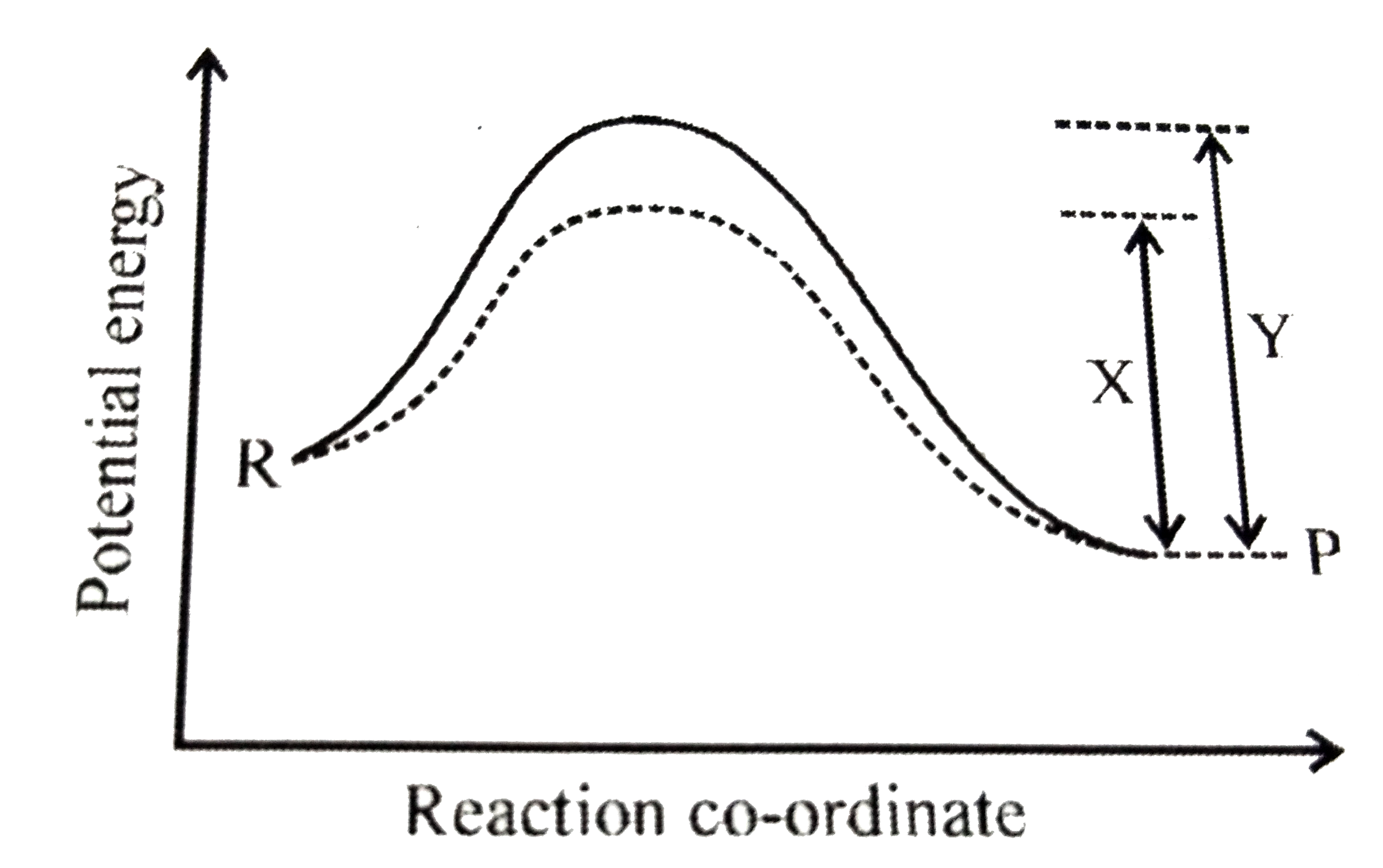What is the effect of catalyst on activation energy ?
Step-by-Step Solution:
1. Understanding Activation Energy (Ea):
- Activation energy is the minimum energy required for a chemical reaction to occur. It is the energy barrier that reactants must overcome to be converted into products.
2. Role of a Catalyst:
- A catalyst is a substance that increases the rate of a chemical reaction without being consumed in the process. It achieves this by providing an alternative pathway for the reaction with a lower activation energy.
3. Effect of Catalyst on Activation Energy:
- When a catalyst is introduced to a reaction, it lowers the activation energy (Ea). This means that a greater number of reactant molecules have enough energy to overcome the energy barrier and form the activated complex, leading to an increased rate of reaction.
4. Graphical Representation:
- To visualize the effect of a catalyst, we can draw an energy vs. reaction coordinate graph:
- On the x-axis, we have the reaction coordinate (progress of the reaction).
- On the y-axis, we have the energy.
- The graph will show two curves: one for the uncatalyzed reaction and another for the catalyzed reaction.
- The peak of the curve represents the activation energy. The height of this peak is lower for the catalyzed reaction compared to the uncatalyzed reaction.
5. Conclusion:
- The introduction of a catalyst reduces the activation energy required for the reaction to proceed, allowing more reactant molecules to convert into products more easily and quickly. The overall enthalpy change (ΔH) of the reaction remains unchanged.
---
- Activation energy is the minimum energy required for a chemical reaction to occur. It is the energy barrier that reactants must overcome to be converted into products.
- A catalyst is a substance that increases the rate of a chemical reaction without being consumed in the process. It achieves this by providing an alternative pathway for the reaction with a lower activation energy.
- When a catalyst is introduced to a reaction, it lowers the activation energy (Ea). This means that a greater number of reactant molecules have enough energy to overcome the energy barrier and form the activated complex, leading to an increased rate of reaction.
- To visualize the effect of a catalyst, we can draw an energy vs. reaction coordinate graph:
- On the x-axis, we have the reaction coordinate (progress of the reaction).
- On the y-axis, we have the energy.
- The graph will show two curves: one for the uncatalyzed reaction and another for the catalyzed reaction.
- The peak of the curve represents the activation energy. The height of this peak is lower for the catalyzed reaction compared to the uncatalyzed reaction.
- The introduction of a catalyst reduces the activation energy required for the reaction to proceed, allowing more reactant molecules to convert into products more easily and quickly. The overall enthalpy change (ΔH) of the reaction remains unchanged.
Topper's Solved these Questions
- CHEMICAL KINETICSBOOK - AAKASH INSTITUTECHAPTER - CHEMICAL KINETICSEXERCISE - Try Yourself
10 Videos
- CHEMICAL KINETICSBOOK - AAKASH INSTITUTECHAPTER - CHEMICAL KINETICSEXERCISE - EXERCISE
30 Videos
- CHEMICAL BONDING AND MOLECULAR STRUCTURE BOOK - AAKASH INSTITUTECHAPTER - CHEMICAL BONDING AND MOLECULAR STRUCTURE EXERCISE - Assignment Section J (Aakash Challengers Questions)
10 Videos
- CHEMISTRY IN EVERYDAY LIFE BOOK - AAKASH INSTITUTECHAPTER - CHEMISTRY IN EVERYDAY LIFE EXERCISE - Assignment ( SECTION - A)
45 Videos
Similar Questions
Knowledge Check
Arrhenius studied the effect of temperature on the rate of a reaction and postulated that rate constant varies with temperature exponentially as k=Ae−Ea/RT. For most of the reactions, it was found that the temperature coefficient of the reaction lies between 2 to 3. The method is generally used for finding the activation energy of a reaction. Keeping temperature constant, the effect of catalyst on the activation energy has also been studied by studying how much the rate of reaction changes in the presence of catalyst. In most of the cases, it is observed that catalyst lowers the activation energy barrier and increases the rate of reaction.
If the rate of reaction doubles for 10∘ rise of temperature from 290 K to 300 K, the activation energy of the reaction will be approximatelyA40 kJ mol−1B50 kJ mol−1C60 kJ mol−1D70 kJ mol−1Arrhenius studied the effect of temperature on the rate of a reaction and postulated that rate constant varies with temperature exponentially as k=Ae−Ea/RT. For most of the reactions, it was found that the temperature coefficient of the reaction lies between 2 to 3. The method is generally used for finding the activation energy of a reaction. Keeping temperature constant, the effect of catalyst on the activation energy has also been studied by studying how much the rate of reaction changes in the presence of catalyst. In most of the cases, it is observed that catalyst lowers the activation energy barrier and increases the rate of reaction.
If x is the fraction of molecules having energy greater than Ea, it will be given byAx=−EaRTBln x=−EaRTCx=eEa/RTDAny of these.Arrhenius studied the effect of temperature on the rate of a reaction and postulated that rate constant varies with temperature exponentially as k=Ae−Ea/RT. For most of the reactions, it was found that the temperature coefficient of the reaction lies between 2 to 3. The method is generally used for finding the activation energy of a reaction. Keeping temperature constant, the effect of catalyst on the activation energy has also been studied by studying how much the rate of reaction changes in the presence of catalyst. In most of the cases, it is observed that catalyst lowers the activation energy barrier and increases the rate of reaction.
Which of the following plot will be linear ?Aln k versus T with - ve slopeBk versus 1/T with - ve slopeCln k versus 1/T with - ve slopDln k versus 1/T with + ve slope.
The graph of the effect of catalyst on activation energy is given below. Fill up the blanks X and Y with appropriate statements

View Solution(a) Illustrate graphically the effect of catalyst on activation energy.
(b) Catalysts have no effect on the equilibrium constant. Why?
(c ) The decomposition of A into product has value of k as 4.5×103s−1 at 10∘C and activation energy is 60 kJ mol−1. Calculate the temperature at which the value of kW(J) be 1.5×104s−1.
View Solution(a) Illustrate graphically the effect of catalyst on activation energy.
(b) Catalysts have no effect on the equilibrium constant. Why ?
( c ) The decomposition of A into product has value of k as 4.5×103s−1 at 10∘C and activation energy is 60 kJ mol−1. Calculate the temperature at which the value of k will be 1.5×104s−1.
View SolutionArrhenius studied the effect of temperature on the rate of a reaction and postulated that rate constant varies with temperature exponentially as k=Ae−Ea/RT. For most of the reactions, it was found that the temperature coefficient of the reaction lies between 2 to 3. The method is generally used for finding the activation energy of a reaction. Keeping temperature constant, the effect of catalyst on the activation energy has also been studied by studying how much the rate of reaction changes in the presence of catalyst. In most of the cases, it is observed that catalyst lowers the activation energy barrier and increases the rate of reaction.
The pre-exponential factor in the Arrhenus equation of second order reaction has the units
View SolutionArrhenius studied the effect of temperature on the rate of a reaction and postulated that rate constant varies with temperature exponentially as k=Ae−Ea/RT. For most of the reactions, it was found that the temperature coefficient of the reaction lies between 2 to 3. The method is generally used for finding the activation energy of a reaction. Keeping temperature constant, the effect of catalyst on the activation energy has also been studied by studying how much the rate of reaction changes in the presence of catalyst. In most of the cases, it is observed that catalyst lowers the activation energy barrier and increases the rate of reaction.
If the rate of reaction grows 15.6 times on increasing the temperature by 30 K, the temperature coefficient of the reaction will be nearly
View Solution

